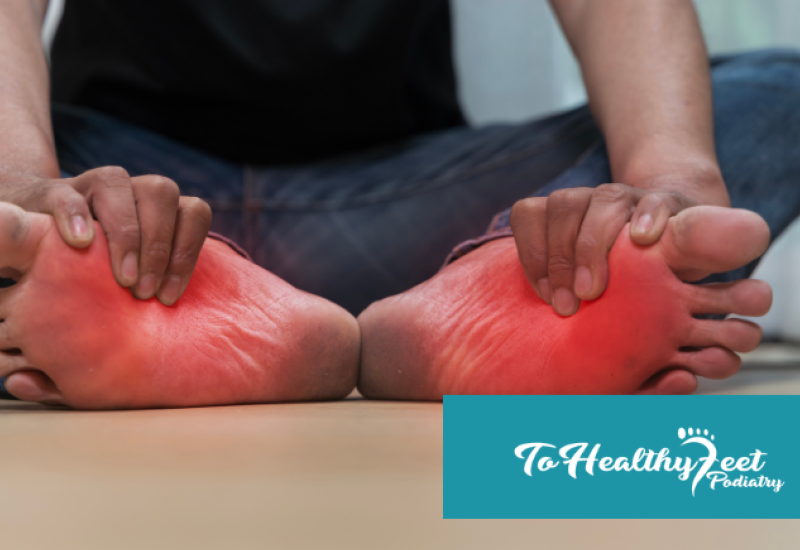If you’ve ever experienced sharp pain in the heel or arch of your foot, especially when you first get out of bed or after standing for long periods, you might be dealing with plantar fasciitis. This common foot condition occurs when the plantar fascia, a thick band of tissue that runs along the bottom of your foot, becomes inflamed. While plantar fasciitis can be incredibly painful, understanding its causes is the first step toward finding relief and preventing it from worsening. In this blog, we’ll look at the top four causes of plantar fasciitis and provide practical tips on how to avoid it.
1. Overuse or Strain from Physical Activity
One of the leading causes of plantar fasciitis is overuse, particularly among athletes and those who engage in high-impact physical activities like running, basketball, or dance. These activities put a lot of stress on the feet, especially the plantar fascia, which can result in tiny tears in the tissue. Over time, this repeated strain can lead to inflammation, causing the characteristic pain associated with plantar fasciitis.
How to Prevent It:
To prevent overuse injuries, it’s important to give your feet adequate rest between high-impact activities. Gradually increase the intensity and duration of your exercise routine rather than pushing yourself too hard too quickly. Incorporating low-impact exercises like swimming or cycling into your routine can also reduce strain on your feet while keeping you active. Stretching your calves and feet before and after workouts is another key way to prevent plantar fascia strain.
2. Wearing Unsupportive Footwear
Your choice of footwear plays a huge role in the health of your feet. Wearing shoes that lack proper arch support, cushioning, or fit—such as flip-flops, flat sandals, or worn-out sneakers—can contribute to the development of plantar fasciitis. Unsupportive shoes can cause your feet to flatten excessively, stretching the plantar fascia and leading to inflammation over time.
How to Prevent It:
The best way to prevent plantar fasciitis caused by poor footwear is to choose shoes that provide proper support. Look for shoes with good arch support, cushioned soles, and a stable heel. If you stand or walk for long periods, it’s especially important to wear shoes designed to support your feet. Additionally, avoid walking barefoot on hard surfaces, as this can also put unnecessary strain on your plantar fascia. If needed, custom orthotics or shoe inserts can offer extra support.
3. Obesity or Excess Weight
Carrying extra weight puts additional pressure on your feet, especially the plantar fascia, increasing the risk of inflammation. People who are overweight or obese are more likely to develop plantar fasciitis due to the added strain on the tissues in their feet. This condition is also common during pregnancy when rapid weight gain can quickly increase pressure on the feet.
How to Prevent It:
Managing your weight is an effective way to reduce your risk of plantar fasciitis. Even a small reduction in weight can take significant pressure off your feet. Incorporating a healthy, balanced diet with regular physical activity is key to maintaining a healthy weight and keeping your feet in good shape. If you are pregnant, consider wearing supportive shoes and using custom orthotics to help absorb the added pressure on your feet as your body changes.
4. Flat Feet or High Arches
Having a natural foot shape that doesn’t provide adequate support—whether flat feet or high arches—can also contribute to the development of plantar fasciitis. Flat feet tend to overstretch the plantar fascia, while high arches can cause the tissue to pull too tightly. Both conditions can lead to inflammation and pain in the heel and arch.
How to Prevent It:
If you have flat feet or high arches, it’s important to wear shoes that cater to your foot shape. Look for shoes specifically designed for arch support and consider using orthotic inserts to better support your plantar fascia. Custom orthotics are often recommended to ensure your feet are properly aligned and supported throughout the day, reducing the risk of strain and pain. Regularly stretching your feet and calves can also help keep your plantar fascia flexible and less prone to injury.
Plantar fasciitis is a painful condition that can significantly impact your daily life, but understanding the causes can help you take steps to prevent it. Whether you’re an athlete prone to overuse injuries, someone who spends a lot of time on their feet, or dealing with weight-related strain, making simple adjustments to your routine can go a long way in protecting your feet. From choosing the right footwear to maintaining a healthy weight, these preventive measures can help keep plantar fasciitis at bay.
If you’re struggling with persistent foot pain or suspect you have plantar fasciitis, it’s always best to seek advice from a podiatrist. At To Healthy Feet in New York, we specialize in diagnosing and treating plantar fasciitis, providing personalized care to help you find relief and get back on your feet. Don’t wait for the pain to worsen— call us or contact us today and take the first step toward healthier, happier feet!
FAQs
Q: Can wearing unsupportive shoes cause plantar fasciitis?
A: Yes, wearing shoes without proper arch support or cushioning can increase strain on your plantar fascia, leading to pain and inflammation.
Q: Can exercises help prevent plantar fasciitis?
A: Yes, stretching and strengthening exercises for your feet and calves can improve flexibility and reduce strain on the plantar fascia, helping to prevent plantar fasciitis.
Q: When should I see a podiatrist for plantar fasciitis?
A: If your plantar fasciitis pain persists despite home treatments or significantly impacts your daily activities, it's best to consult a podiatrist for further evaluation and treatment options. Call us for more personalized information.




